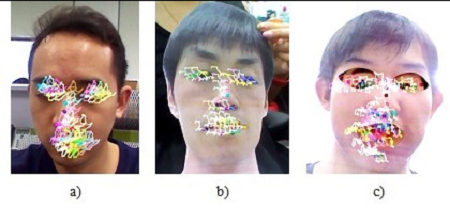


Indian Journal of Science and Technology
Year: 2021, Volume: 14, Issue: 25, Pages: 2128-2136
Original Article
N Nanthini 1, *, N Puviarasan 2, P Aruna 3
Received Date:28 May 2021, Accepted Date:04 July 2021, Published Date:21 July 2021
Objectives: To propose a new liveness detection algorithm using optical flow to ensure the presence of actual live face into a photograph or 2D masks in face recognition biometric security systems. Methods: This work proposes an anti-spoofing model namely Sparse Optical Flow Technique with Velocity Estimation Approach (SOFT_VEA). Optical flow is an effective method for tracking objects in motion. It is adapted in this work to capture facial movements and decide the liveness state. The proposed algorithm considers real faces and two kinds of photo imposters. Findings: From the input video, the motion information of specific facial landmark points is captured by an optical flow algorithm. Then, the velocity of those landmark points is estimated via Euclidean distance. Based on this calculated velocity, the fake face is discriminated from the real face using a threshold value. The Empirical study shows that the proposed face liveness detection model is effective with an accuracy of 88% and Half Total Error Rate (HTER) of 2.45. Novelty: The proposed work is based on real face and photo imposters. The liveness detection algorithm is developed with a novel velocity estimation approach. It is very helpful for biometric security systems.
Keywords
Biometric security system, Liveness detection, Antispoofing, Facial landmarks, Optical flow, Euclidean distance
© 2021 Nanthini et al. This is an open-access article distributed under the terms of the Creative Commons Attribution License, which permits unrestricted use, distribution, and reproduction in any medium, provided the original author and source are credited. Published By Indian Society for Education and Environment (iSee)
Subscribe now for latest articles and news.